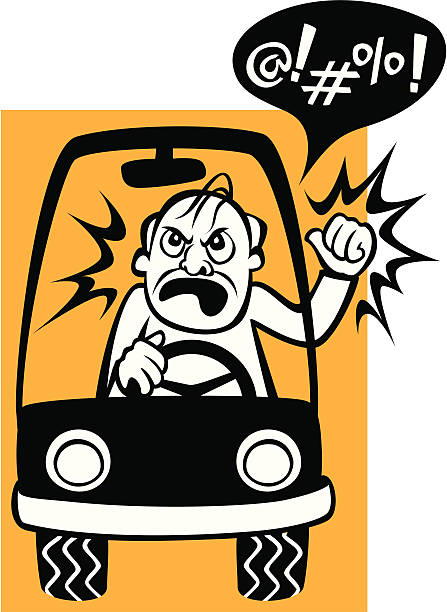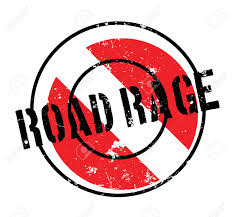Road Rage Curriculum (individual or Class) understanding and recognizing consequences of aggressive driving with an instructor. (2 hour class)
SKU:
$100.00
$100.00
Unavailable
per item
Description
in this Curriculum student will Gain a better Understanding on How to handle Rode Rage.
Students will also learn:
•Techniqes to useing safe Driving tips
•Be aware of other Motorist and Surroundings
•Be aware or Triggers
ROAD RAGE
Definition. There is no national definition for the term "road rage". However, it is commonly defined as a societal condition where motorists lose their temper in reaction to a traffic disturbance. In most cases, the traffic situations encountered are typical of today's normal driving conditions and higher traffic volumes.
"Aggressive driving" refers to an angry motorist attempting to intentionally injure or kill another driver because of a traffic dispute. Aggressive drivers react negatively and uses their vehicles to retaliate by making sudden, threatening maneuvers. This makes "road rage" a serious issue of traffic safety - the safety of yourself and others.
°Cause. Experts say aggressive driving behaviors are triggered by a variety of stimuli. Some are provoked by the actions of another driver; others are set off by roadway congestion. But, most are caused by the drivers' own moods and reactions when they get behind the wheel.
°Aggressive Driver Profile. Persons who exhibit aggressive behaviors cross all age, race, socioeconomic and gender lines. Even persons who are usually "mild-mannered" can blow their top behind the wheel. These persons may only become mad when they're on the road. However, persons who are characteristically cynics, rude, angry or aggressive are prone to get angry more often. Those persons are "raging" at home, at work and on the road
Common Motorist Irritants:
Tailgating to pressure a driver to go faster or get out of the way.
Flashing lights in order to signal persons to move to another lane.
Obscene gesturing.
Changing lanes without signaling.
Blasting the horn.
Frequently changing lanes by weaving back and forth.
Racing to beat a yellow light that's about to turn red.
Traveling in the passing or left lane at a slower speed, making it impossible for others to pass.
Driving with the high beams on behind another vehicle or toward oncoming traffic.
Cutting people off. Slowing down after passing someone.
Not making a right turn in the right-hand turn lane.
Not reacting quickly after the red light turns green.
What Motorists Can Do:
Use directional lights to indicate a lane shift.
Follow the laws of the road.
Be polite and courteous.
Stay within the speed limits.
Drive at a safe following distance.
Stay mostly within one lane.
Don't become distracted by using the car phone or reading the paper while the vehicle is in motion.
Put some physical distance between you and drivers who are behaving erratically.
Don't show a reaction to the aggressive driver; especially, avoid eye Contact.
Avoid behaviors that antagonize or irritate others.
Learn to control your temper and keep your cool in traffic.
Use your horn sparingly.
Keep the music in your vehicle at a level that doesn't annoy others.
If you are feeling frustrated - create a distraction such as turning on the radio, start a conversation with a passenger, play 20 questions, or talk yourself through the situation to calm down.
Be tolerant of those who exhibit non-conforming traffic behaviors.
National Statistics. According to the U.S. Department of Transportation, approximately 250,000 people have been killed and 20 million motorists injured in traffic crashes between 1990-96. The U.S. DOT estimates that two thirds of fatalities are at least partially caused by aggressive driving. A study by the AAA Foundation for Traffic Safety that included reports from 30 newspapers, a review of insurance claims and police reports from 16 cities revealed the following statistics among 10,037 occurrences between 1990 and 1996.
10,037 incidents of aggressive driving
218 deaths
More than 12,610 injuries
Students will also learn:
•Techniqes to useing safe Driving tips
•Be aware of other Motorist and Surroundings
•Be aware or Triggers
ROAD RAGE
Definition. There is no national definition for the term "road rage". However, it is commonly defined as a societal condition where motorists lose their temper in reaction to a traffic disturbance. In most cases, the traffic situations encountered are typical of today's normal driving conditions and higher traffic volumes.
"Aggressive driving" refers to an angry motorist attempting to intentionally injure or kill another driver because of a traffic dispute. Aggressive drivers react negatively and uses their vehicles to retaliate by making sudden, threatening maneuvers. This makes "road rage" a serious issue of traffic safety - the safety of yourself and others.
°Cause. Experts say aggressive driving behaviors are triggered by a variety of stimuli. Some are provoked by the actions of another driver; others are set off by roadway congestion. But, most are caused by the drivers' own moods and reactions when they get behind the wheel.
°Aggressive Driver Profile. Persons who exhibit aggressive behaviors cross all age, race, socioeconomic and gender lines. Even persons who are usually "mild-mannered" can blow their top behind the wheel. These persons may only become mad when they're on the road. However, persons who are characteristically cynics, rude, angry or aggressive are prone to get angry more often. Those persons are "raging" at home, at work and on the road
Common Motorist Irritants:
Tailgating to pressure a driver to go faster or get out of the way.
Flashing lights in order to signal persons to move to another lane.
Obscene gesturing.
Changing lanes without signaling.
Blasting the horn.
Frequently changing lanes by weaving back and forth.
Racing to beat a yellow light that's about to turn red.
Traveling in the passing or left lane at a slower speed, making it impossible for others to pass.
Driving with the high beams on behind another vehicle or toward oncoming traffic.
Cutting people off. Slowing down after passing someone.
Not making a right turn in the right-hand turn lane.
Not reacting quickly after the red light turns green.
What Motorists Can Do:
Use directional lights to indicate a lane shift.
Follow the laws of the road.
Be polite and courteous.
Stay within the speed limits.
Drive at a safe following distance.
Stay mostly within one lane.
Don't become distracted by using the car phone or reading the paper while the vehicle is in motion.
Put some physical distance between you and drivers who are behaving erratically.
Don't show a reaction to the aggressive driver; especially, avoid eye Contact.
Avoid behaviors that antagonize or irritate others.
Learn to control your temper and keep your cool in traffic.
Use your horn sparingly.
Keep the music in your vehicle at a level that doesn't annoy others.
If you are feeling frustrated - create a distraction such as turning on the radio, start a conversation with a passenger, play 20 questions, or talk yourself through the situation to calm down.
Be tolerant of those who exhibit non-conforming traffic behaviors.
National Statistics. According to the U.S. Department of Transportation, approximately 250,000 people have been killed and 20 million motorists injured in traffic crashes between 1990-96. The U.S. DOT estimates that two thirds of fatalities are at least partially caused by aggressive driving. A study by the AAA Foundation for Traffic Safety that included reports from 30 newspapers, a review of insurance claims and police reports from 16 cities revealed the following statistics among 10,037 occurrences between 1990 and 1996.
10,037 incidents of aggressive driving
218 deaths
More than 12,610 injuries

